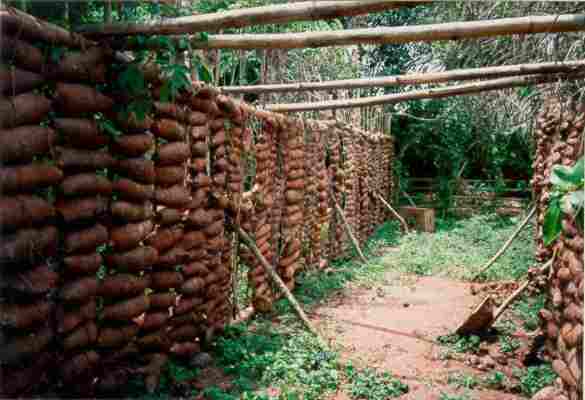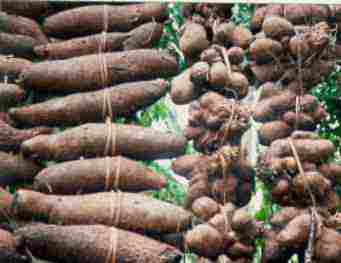 |
||
| Above: A yam barn keep Benin's ancient staple crop off the ground, where the tubers would be attacked by insects and fungal rot. |
 |
||
| Above: A yam barn keep Benin's ancient staple crop off the ground, where the tubers would be attacked by insects and fungal rot. |
Yams require sunlight and necessitate tree clearance and the maintenance of secondary fallows for their cultivation. Their extensive cultivation in the rainforest zone probably began about 3,000 years ago, as this is when the rainforest flora pollen declines and oil palm pollen increases - probably indicating forest clearance. The Benin earthworks enclosed both settlements and their farmlands about 1,600 years later. The nocturnal destruction by hungry forest elephants could have been one reason. Another explanation could be the advent of an arid phase further north around this time, as this could have shunted many savannah dwellers further south to colonise this area and demarcate their new farming territories. Oral traditions link this digging to the Benin dynasty over 700 years later (as politics dictates); and there is equivocal archaeological data to support this. If so, rival chiefs may have employed slaves captured from up to 200 miles away by Benin's formidable army.
 
|
 |
| Over the last six to ten millenia, Nigeria's farmers developed many different varieties of yam; and these can cope with different seasonal climates and soil conditions, as well as providing some culinary variety. | Convoluted seed yams with their long tendrils (right) are quite distinct from the large tubers resulting from cultivation (left). |
Return to Benin Earthworks OR Return to Cultural Landscapes